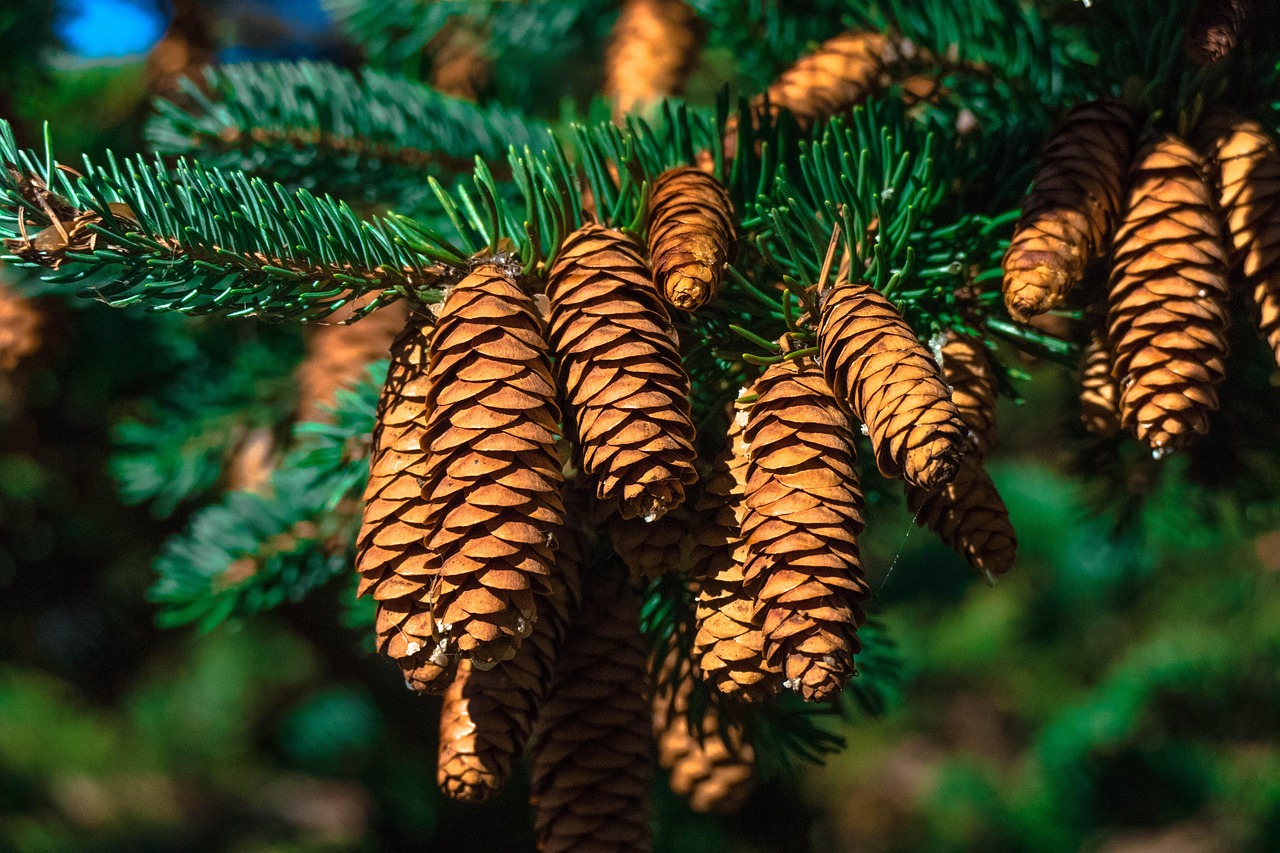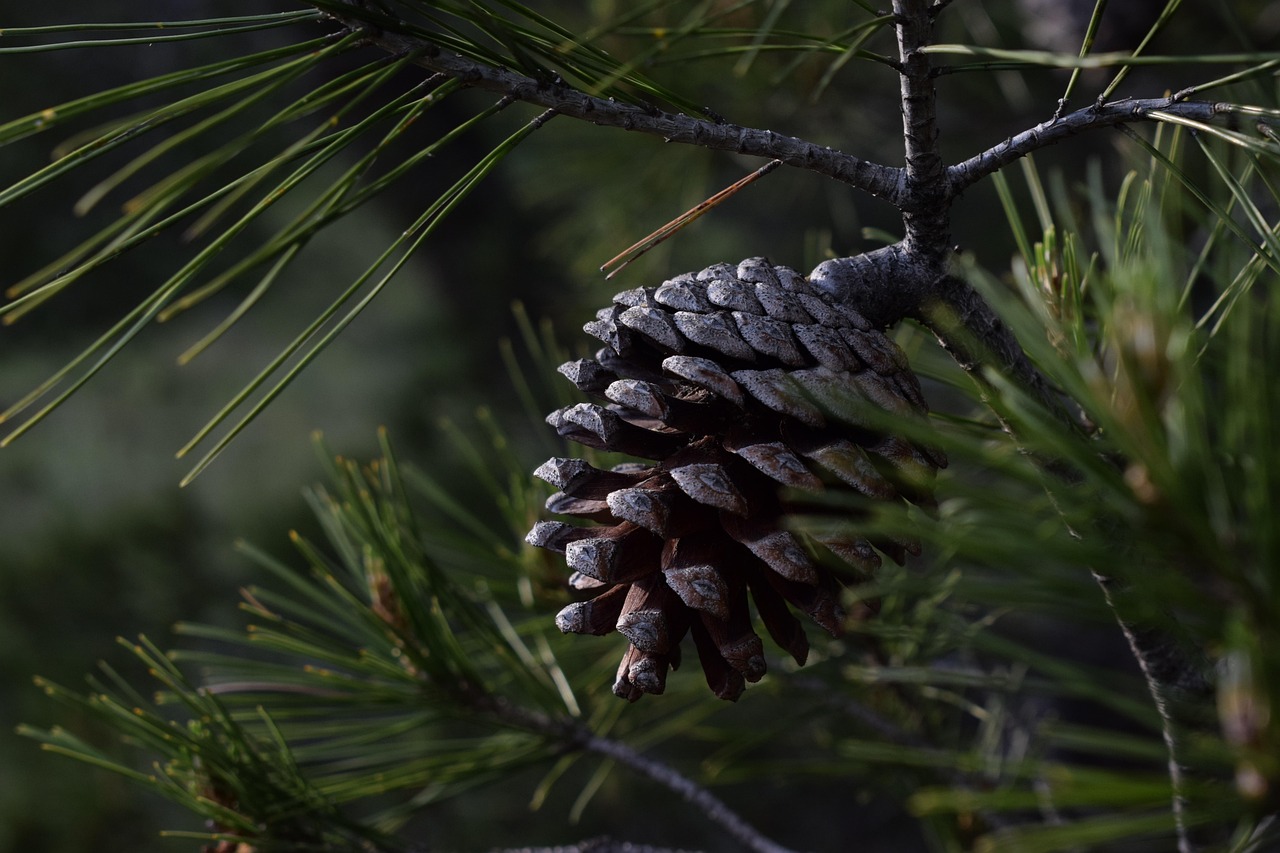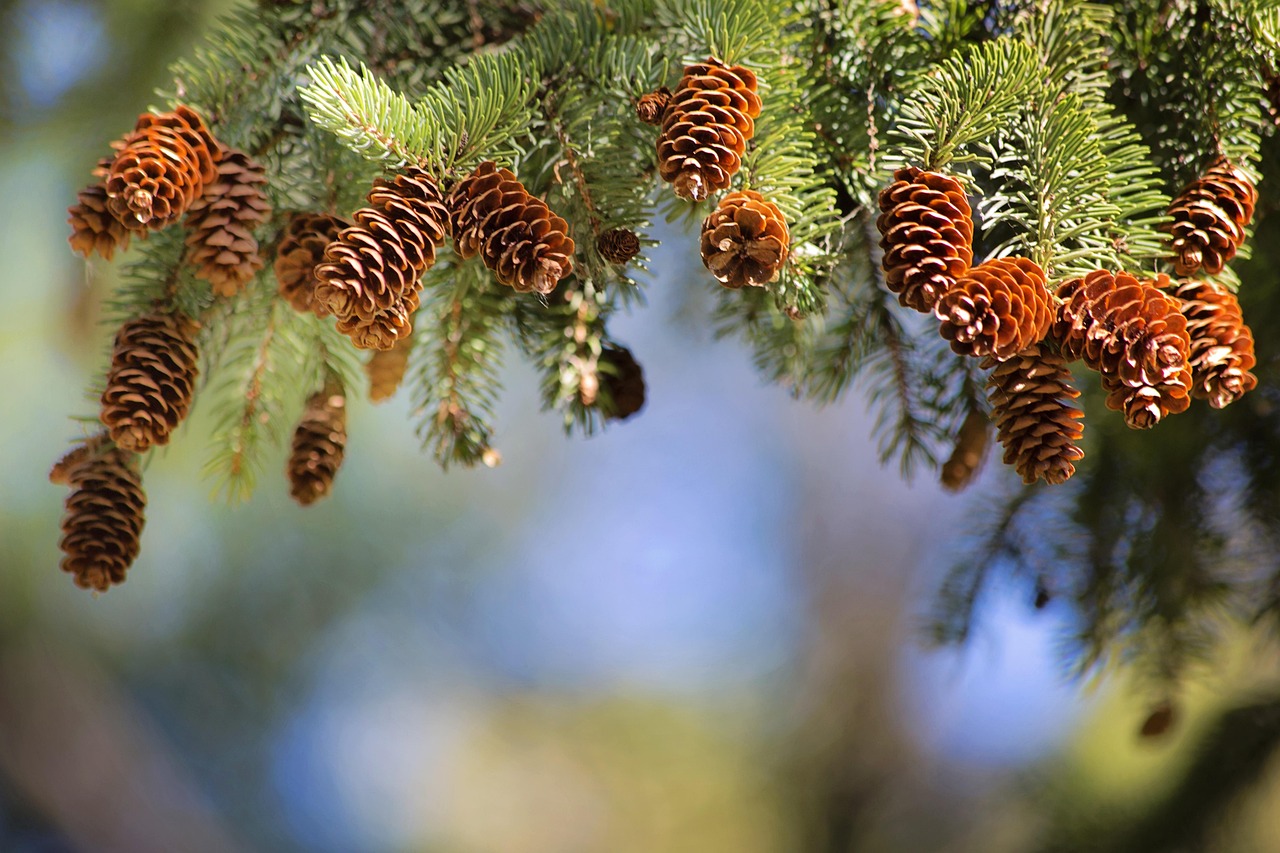Texas is home to a diverse range of ecosystems, and its vast landscapes are adorned with an array of majestic pine trees. For nature enthusiasts and residents alike, understanding these pines enhances appreciation for the natural beauty of the Lone Star State. In this article, we will explore the distinctive characteristics of Texas pines, providing tips for identification and insights into their ecological significance.
Pines are coniferous trees belonging to the Pinaceae family. They are known for their needle-like leaves and are primarily found in temperate and subtropical regions. Texas boasts several species of pines that thrive in various habitats, from the eastern forests to the western plains. Identifying these pines can be a rewarding experience, as each species has unique features that set it apart.

In Texas, pines typically grow in sandy soils and are often found in clusters. They play a crucial role in their ecosystems by providing habitat for wildlife, stabilizing soil, and contributing to the overall health of the environment. Their presence not only adds beauty to the landscape but also supports biodiversity.
Common Pine Species in Texas
There are several species of pines that you can find across Texas. Each species has its distinct characteristics, making them easier to identify. Here are some of the most common pines found in the state:
- Eastern White Pine: This tall tree features long, soft needles grouped in clusters of five. It has a straight trunk and can grow up to 100 feet tall.
- Longleaf Pine: Recognized for its long needles, this species can reach heights of over 100 feet. Its bark is thick and scaly, providing protection from fires.
- Slash Pine: Commonly found in wet areas, this tree has shorter needles grouped in bundles of two or three. Its straight trunk is often used in the timber industry.
- Loblolly Pine: This fast-growing tree thrives in various soil types. It has dark green needles and can reach heights of 100 feet.
- Ponderosa Pine: Known for its distinctive tall stature and large cones, this pine has long needles and develops a sweet aroma when crushed.
These species not only dominate the landscape but also serve different purposes from timber production to wildlife habitat. Understanding their features is essential for proper identification.
Characteristics to Look For
When trying to identify a pine tree, several key characteristics can help distinguish one species from another. Here are some important features to consider:
- Needle Length: The length and arrangement of needles can vary significantly between species.
- Cones: The size, shape, and texture of pine cones are important identification markers.
- Bark Texture: The color and texture of the bark can vary; some barks are smooth while others are rough or scaly.
- Growth Habit: Observing the overall shape and height of the tree can also provide clues.
By paying attention to these characteristics, you can gain confidence in identifying different pine species as you explore the natural landscapes of Texas.
The Role of Pines in Texas Ecosystems
Pine trees are vital components of their ecosystems. They provide shelter for various wildlife, including birds and small mammals. The dense foliage offers protection while also serving as a source of food through seeds and pollen. Additionally, pines contribute to soil health by preventing erosion and promoting water retention.
The ecological significance of these trees extends beyond just supporting wildlife. They play a crucial role in carbon sequestration, helping to combat climate change by absorbing carbon dioxide from the atmosphere.
Understanding the diversity of pines in Texas not only enriches our knowledge but also highlights the importance of conserving these essential trees for future generations.
Identifying Texas Pines: Key Features and Identification Tips
Identifying pines in Texas can be an enjoyable and informative experience. With a little practice and attention to detail, you can easily distinguish between the various species. Here are some key features and tips to help you identify Texas pines effectively.
Leaf Characteristics
The leaves of pine trees, commonly referred to as needles, are one of the most distinctive features for identification. Below are some important aspects to consider:
- Needle Arrangement: Needles can be grouped in clusters, usually referred to as fascicles. Common arrangements include:
- Two needles per fascicle (e.g., Loblolly Pine)
- Three needles per fascicle (e.g., Slash Pine)
- Five needles per fascicle (e.g., Eastern White Pine)
- Needle Length: The length of the needles varies significantly. For example, the Longleaf Pine has long needles that can reach up to 18 inches, while the Ponderosa Pine typically has shorter needles.
- Needle Color: Needle color can also help with identification. Some pines have dark green needles, while others may exhibit lighter shades or bluish hues.
Bark Texture and Color
The bark of a pine tree provides additional clues for identification. Here are key features to observe:
- Bark Color: Pine bark can range from light gray to reddish-brown. For instance, the Loblolly Pine has dark, scaly bark, while the Longleaf Pine has thick, flaky bark that is more orange-brown.
- Bark Texture: Notice whether the bark is smooth or rough. Some species have deeply furrowed bark, while others have a more uniform texture.
- Bark Thickness: The thickness of the bark can vary; thicker bark often signifies a tree adapted to withstand fire damage.
Cones and Seed Characteristics
Pine cones are another important feature for identification. The size, shape, and arrangement of cones can vary widely among species:
- Size: Cones can range from small (2 inches) to large (up to 10 inches), depending on the species.
- Shape: Some cones are elongated and cylindrical, while others may be more rounded or ovoid.
- Seed Dispersal: Observing how seeds are dispersed can also aid in identification. Some cones open when mature to release seeds, while others remain closed until exposed to heat or fire.
Tree Form and Growth Habit
The overall form of a pine tree can provide valuable identification clues as well. Factors to consider include:
- Height: Some pines can grow very tall (over 100 feet), while others remain relatively shorter.
- Crown Shape: The shape of the crown may be rounded, conical, or irregular. For instance, the Eastern White Pine typically has a more upright and conical shape.
- Branch Arrangement: Noticing how branches grow can also help. Some pines have branches that extend horizontally, while others may have a more vertical growth pattern.
By taking note of these characteristics during your explorations, you will become proficient at identifying the various pine species found throughout Texas.

Pine Habitats in Texas

Understanding where different pines grow is essential for identification. Pines in Texas thrive in specific habitats that support their growth. Here are some common habitats where you will find Texas pines:
- Coastal Plains: Many pines grow along the coastal regions where sandy soils prevail.
- East Texas Forests: This area is rich in diverse pine species, particularly Longleaf and Loblolly Pines.
- Hill Country: In this region, you may find Ponderosa Pines thriving in higher elevations.
- Shrublands and Grasslands: Some pines adapt well to more open landscapes and coexist with other vegetation.
Each habitat provides unique conditions that influence the growth patterns and characteristics of pines. Understanding these environments enhances your ability to identify the right species based on its location.
Ecological Importance of Texas Pines

The ecological role of pine trees in Texas extends far beyond their beauty. These trees contribute significantly to the health of various ecosystems, providing numerous benefits to both wildlife and humans. Understanding their ecological importance helps underscore the need for conservation efforts.
Wildlife Habitat
Pine forests serve as vital habitats for a diverse range of wildlife. Many species rely on pines for shelter, nesting, and food. Here are some examples of how pines support wildlife:
- Bird Species: Numerous birds, such as the Pine Warbler and Eastern Bluebird, nest in the branches of pine trees. The dense foliage offers protection from predators.
- Mammals: Small mammals like squirrels and rabbits often make their homes in the base of pine trees. Larger mammals, including deer, use pines for cover while foraging.
- Insects: Pines are also home to various insects that play crucial roles in the ecosystem, including pollinators and decomposers.
Soil and Water Conservation
Pine trees play an essential role in maintaining soil health and conserving water resources. Their extensive root systems stabilize soil, preventing erosion and promoting water retention. Here are some key benefits:
- Erosion Control: The roots of pine trees grip the soil, reducing the impact of rain and wind that can lead to erosion.
- Water Filtration: Pine forests act as natural filters, helping to purify water as it percolates through the soil.
- Moisture Retention: The dense canopy of needles creates a microclimate that helps retain moisture in the soil, benefiting other plant species in the area.
Carbon Sequestration
Pine trees play a crucial role in combating climate change through carbon sequestration. They absorb carbon dioxide from the atmosphere during photosynthesis and store it in their biomass. This process has several implications:
- Climate Regulation: By absorbing carbon dioxide, pines help mitigate the effects of climate change, contributing to better air quality and a more stable climate.
- Long-Term Storage: The carbon sequestered by mature pine trees can remain stored for decades or even centuries, making them important allies in efforts to reduce greenhouse gases.
Threats to Pine Ecosystems in Texas
While Texas pines offer numerous ecological benefits, they face several threats that jeopardize their health and survival. Awareness of these threats is crucial for effective conservation efforts.
Urban Development
As urban areas expand, many pine forests are being cleared for development. This leads to habitat loss and fragmentation, making it challenging for wildlife to thrive. Urban development can also disrupt natural water cycles.
Pests and Diseases
Pines are susceptible to various pests and diseases that can devastate populations. Some common threats include:
- Bark Beetles: These insects can bore into pine trees, causing stress and weakening them, which may lead to tree mortality.
- Fungal Diseases: Fungal infections can affect pine health, leading to needle drop or decay.
Climate Change
Changing climate conditions can dramatically affect pine ecosystems. Increased temperatures and altered precipitation patterns may impact growth rates and increase susceptibility to pests and diseases.
By understanding these threats, communities can take proactive measures to protect and conserve Texas pines, ensuring their survival for future generations.
Conservation Efforts for Texas Pines
To ensure the survival of Texas pines, numerous conservation efforts are being undertaken. These initiatives aim to protect existing pine forests, restore damaged ecosystems, and educate the public about the importance of these trees. Here are some key strategies being implemented:
- Reforestation Projects: Organizations are engaging in reforestation efforts, planting native pine species to restore habitats that have been lost due to urban development or logging.
- Community Engagement: Local communities are encouraged to participate in conservation activities. Educational programs and workshops help raise awareness about the ecological importance of pines.
- Research Initiatives: Scientists and researchers are studying pine ecosystems to understand better their needs and vulnerabilities. This research informs conservation strategies and helps manage pest outbreaks more effectively.
- Protected Areas: Establishing protected areas and reserves ensures that significant pine habitats are preserved from development and other threats. These areas can serve as sanctuaries for wildlife.
Personal Actions for Pine Conservation
Individuals can also play a role in conserving Texas pines. Simple actions can contribute to the well-being of these vital trees:
- Plant Native Trees: When landscaping, consider planting native pine species. This supports local biodiversity and helps maintain healthy ecosystems.
- Advocate for Conservation: Support local conservation organizations and initiatives that focus on protecting pine forests and educating the public.
- Reduce Your Carbon Footprint: Engage in practices that reduce carbon emissions, such as using public transport, recycling, and conserving energy at home.
- Volunteer: Participate in local conservation activities, such as tree planting events or habitat restoration projects.
Final Thoughts
The rich tapestry of Texas pines offers not only beauty but also essential ecological benefits. From providing habitat for wildlife to combating climate change through carbon sequestration, these trees are integral to the health of Texas ecosystems. However, they face significant challenges from urban development, pests, diseases, and climate change.
By understanding how to identify different pine species and recognizing their importance, we can foster a greater appreciation for these magnificent trees. Conservation efforts, both large and small, are crucial for ensuring the survival of Texas pines. As stewards of the environment, everyone has a role to play in protecting these natural treasures for future generations.
As you explore the diverse landscapes of Texas, take the time to observe and appreciate the pines that stand tall and resilient. Their presence enriches our environment and reminds us of the intricate relationships within nature.
